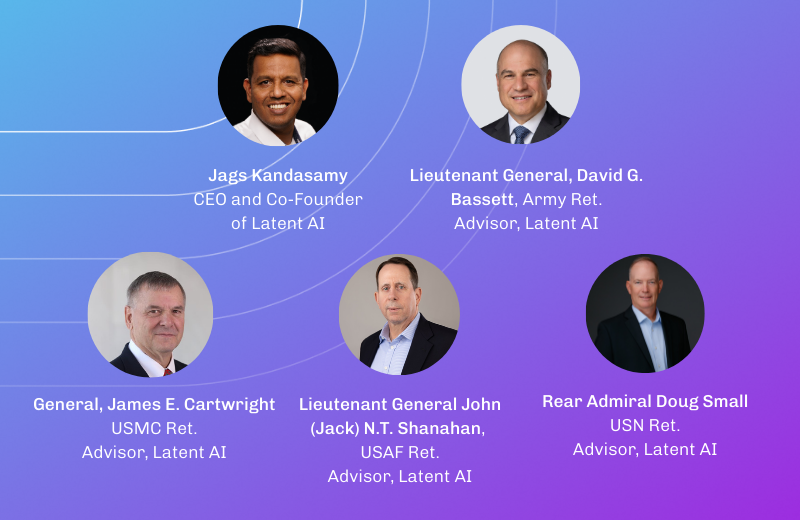Securing the edge: Trust and resilience in AI for military and critical infrastructure

Artificial intelligence (AI) is no longer confined to centralized cloud systems—it’s moving to the edge, where data meets real-time action. In high-stakes environments like military operations and critical infrastructure, this shift brings unparalleled opportunities and significant security challenges that require a balance between security and the benefits of edge computing.
The edge AI landscape
Edge AI involves running AI models directly on devices at the network’s “far edge”—think battlefield sensors or factory machinery—rather than relying on distant cloud servers. This transition, however, exposes new vulnerabilities. Bringing compute nodes to the edge expands the security footprint, even for devices meant to operate offline. These “disconnected” systems may still intermittently transmit data, requiring every component—from the device to the software stack—to be secure and trustworthy.
Deploying AI models introduces risks at every step. Transferring trained models, runtime engines, and applications from a central hub to the edge invites “person-in-the-middle” attacks. Once installed, edge devices can be physically stolen, reverse-engineered, or exploited to reveal sensitive intentions. The stakes are high for both military and commercial applications: a foreign nation, competitor, or saboteur could seize an AI model and its data, turning it against its creators.
The case for edge AI
Despite these risks, edge AI offers compelling advantages over traditional cloud-based systems. Centralized AI often struggles with latency and connectivity issues. Cloud services aren’t always available, and the “warm-up” time to activate dormant models—like those for anomaly detection—can cripple time-sensitive operations. In a factory running ten cloud-based models, for instance, shutting down two to save resources might lead to critical delays when they’re suddenly needed.
Edge computing sidesteps these pitfalls by processing data closer to its source. This reduces bandwidth demands, cuts latency, and optimizes resources. For example, two local servers in a factory can handle a specific task more efficiently than a sprawling cloud infrastructure with its maintenance overhead. In military contexts, where millions of sensors generate overwhelming data streams, cloud solutions falter under storage limits, processing constraints, and delays. Edge AI enables immediate, localized responses—crucial for operational success.
Commercial settings also benefit. Many environments lack reliable or affordable connectivity, and edge AI’s ability to process data locally minimizes reliance on the cloud. Rather than sending raw data, only essential insights—like identifying an anomaly—are transmitted, enhancing security by reducing exposure.
Why take the risk?
Security concerns might tempt some to avoid edge AI altogether, but inaction isn’t a viable option. In military scenarios, real-time decision-making demands edge deployment. In commercial applications, localized processing overcomes connectivity barriers. The key is managing the risks without sacrificing performance.
Building security into the core
Securing edge AI starts with embedding protections directly into the technology. Watermarking, for instance, adds unique signatures to models post-training, proving ownership and detecting tampering with minimal performance impact. If an attacker alters a watermarked model, the distortion becomes evident. Encryption ensures that even if a device is compromised, the model remains inaccessible—an essential trade-off worth the computational cost. Version control further bolsters defenses, enabling tracking of stolen or replicated models for legal or counterintelligence purposes.
Unlike retrofitted security, which often drags down efficiency, these measures integrate seamlessly into the model’s architecture. This proactive approach contrasts with the high overhead of adding security as an afterthought, ensuring edge devices remain secure and agile.
Trust in military operations
Trust in military AI systems relying on real-time data hinges on a combination of technical controls and human oversight. Consider automated target recognition (ATR): Regular human review of outputs can validate accuracy and catch biases, preventing overreliance on automation. With adversaries wielding their own AI capabilities, such vigilance ensures operational integrity.
A framework for deployment
Managing edge AI requires a dual-layered strategy. Picture each edge device as an isolated island, independent yet linked to the “mainland” via a network of bridges. This “edge continuum” demands robust local defenses to protect sensitive data and prevent breaches, paired with secure communication channels to safeguard data in transit. A compromised device can threaten the entire network, much like a contaminated shipment endangering the mainland. Security must be both granular and systemic.
The path forward
Edge AI is no longer a luxury—it’s a necessity for military precision and industrial resilience. Yet its success rests on trust and security. Organizations can unlock edge AI’s potential without exposing vulnerabilities by embedding protections like watermarking and encryption, maintaining human oversight, and treating every device as both an asset and a potential liability.
As threats evolve, so must our defenses. Security isn’t an add-on—it’s the foundation of edge AI’s future.
Curious for more? Read our CEO Jags Kandasamy’s interview with HelpNet Security, “Deploying AI at the Edge: The Security Trade-Offs and How to Manage Them” for additional insights.





